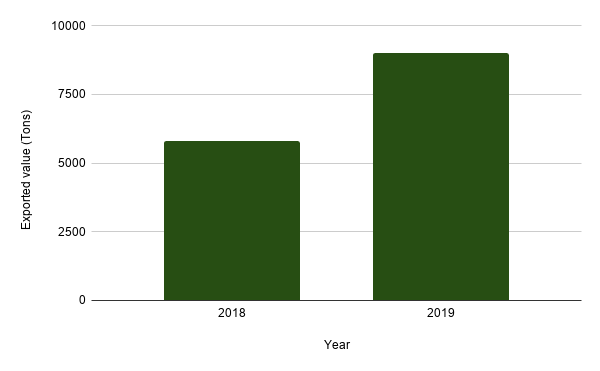Drought conditions set to deplete the 2020/21 Peruvian lime harvest
The Peruvian lime harvest for 2020/21 is set to be negatively impacted by the current drought that has affected the northern part of the country. The rainy season was meant to commence in October and the delay may cause a decrease in the lime yield and increased prices if rainfall continues to be scarce.

Lime production and export trend in Peru
Peru is one of the top producers of lime in the word. Peruvian lime production has grown steadily over the years, increasing at a rate of 1.3% per year between 1997 and 2016, averaging 231K tons per year during this period, and increased by 55% in 2019 compared to the previous year. Producers mainly plant two varieties, Sutil, which is preferred in the domestic market, and the Tahiti variety, which is exported to international markets. More than half of the country’s lime production occurs in Puira, which covers 18,353 hectares, spread across San Lorenzo, Chira and Chulukanas. Lime exports of the tahiti variety have increased significantly, reaching 9 000 tons in 2019 and amounting to USD 9.2 M in value, a 55% increase from 2018.
Peruvian Tahiti Lime exports from 2018 to 2019

Source: Agraria
The effect of the drought on lime production
According to the Global Drought Observatory, the drought has persisted for the majority of the year and the dry weather continues to persist in Northern Peru. This region takes up the majority of the country’s lime production for which the lack of rainfall is set to deplete the country’s lime yield. Contrary to producers’ anticipations, the rainfall season is yet to commence and it is expected that continued dry weather could also lead to smaller sizes of the fruit. Peruvian lime yields have previously been affected by adverse weather, such as the El Niño during 2004-2005 and 2009-2010, where production was reduced to 202K tons and 197K tons , respectively. A decrease in the lime supply is also expected to cause a spike in prices.
Production Outlook
According to the Association of Citrus Producers of Peru (ProCitrus), the next two months are key in determining whether there will be a shortage of lime and a subsequent rise in prices. Experts from ProCitrus expect the rain patterns to normalise in the coming weeks, coinciding with the beginning of the peak summer season. However, if this fails to materialise then a shortage of lime and a spike in prices of the fruit will ensue in the coming months.
Sources:
Global Disaster Alert and Coordination System. “Overall Green alert Drought for Peru-2020.”
Fresh Plaza. “The drought in Peru could impact the 2020/21 mango season.”
Fresh Fruit Portal. “Peruvian lime exports threatened by drought ahead of peak season.”
Fresh Plaza. “Peru: Lime production down.”
Fruit News. “Drought in Peru could lead to a decline in the 2020/21 lime harvest..”
Fresh Plaza. “Peru: Lime exports grew by 3.218% from 2002 to 2016.”
Agraria. “Lemon crops at risk from drought in the north during their key period.”





